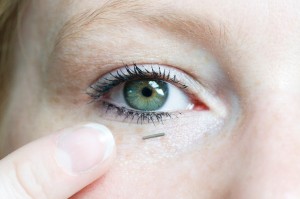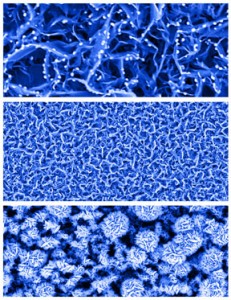It’s upsetting to think about the canaries in the mines singing to their heart’s content only to topple over and die when toxic gases make their presence felt during the mining process. The alternative, of course, is to sacrifice miners. Thankfully, choosing the lesser of two evils will no longer be necessary (actually, I don’t they’ve used canaries in quite a while) as scientists work on sensors that can detect any number of things not just toxic gases in the mines. The University of Massachusetts at Lowell is the latest to announce work on sensors (from the Nov. 15, 2012 news item on Nanowerk),
To detect the toxicity of engineered nanomaterials, such as carbon nanotubes, on living cells, electrical engineering Assoc. Prof. Joel Therrien — along with biology Prof. Susan Braunhut, chemistry Prof. Kenneth Marx and work environment Asst. Prof. Dhimiter Bello — has developed a “nanocanary,” the modern-day, high-tech equivalent of the canary in a coal mine that warned miners of dangerous buildups of toxic gases in the mine shaft.
The nanocanary is an ultrasensitive biosensor designed to continuously monitor tiny physiological changes in the live cells contained within it.
The Nov. 14, 2012 news release by Edwin L. Aguirre, which originated the news item, mentions a recent podcast by one of the researchers (Joel Therrien),
In a recent podcast produced by the Museum of Science in Boston, Therrien talked about the importance of studying how nano-sized particles affect human health and the environment as well as in the safe development of commercial nano products.
“Our biosensor has a wide range of applications, from testing for toxicity in nanomanufacturing to drug development and customized cancer therapeutics,” notes Therrien.
“In testing the toxicity of carbon nanotubes, for example, since the sensor can directly detect adverse effects on living cells, we are able to identify the threshold concentration at which carbon nanotubes lead to the cells’ death,” he explains. “The sensor can also be used to test the response of normal and cancerous cells to drug therapies. In the future, this technology may help guide oncologists in selecting the most appropriate drug for a cancer patient. We also see the potential for this to partially replace animals in testing drugs and other products.”
Therrien’s 16 min. podcast can be heard here.

